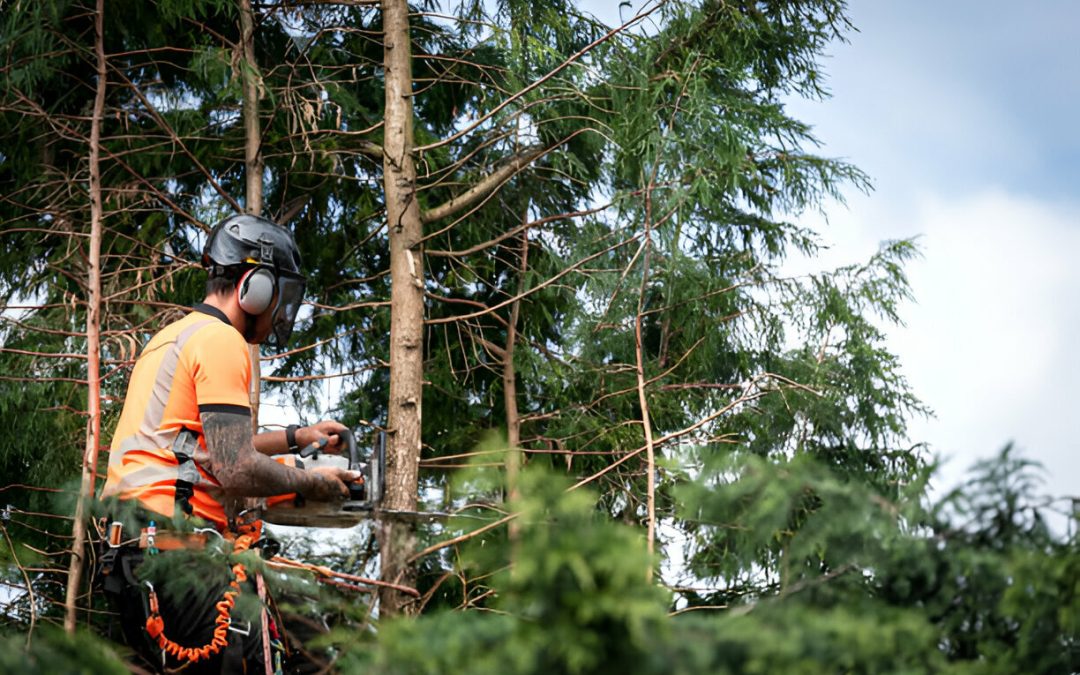Trees enhance the look and worth of a property, although they can also present hazards if not properly cared for. Pruning is a highly effective technique for maintaining the stability and health of huge trees. This procedure entails the installation of steel or synthetic wires between notable branches to diminish tension and avoid branch breakage. This article will explore how tree cabling can prevent costly tree damage, discussing its benefits, the process involved, and when it is necessary.
Understanding Tree Cabling
What is Tree Cabling?
It involves attaching cables from one branch to another to provide support and limit the movement of those branches. By doing this, cabling helps to redistribute the tree’s weight and reduce the strain on individual limbs. This technique is especially useful in preserving old or structurally weak trees that are valuable to a landscape.
Types of Cabling Materials
The materials used for this purpose include high-strength steel and newer synthetic fibers that are designed to be both strong and flexible. The choice of material often depends on the tree’s size, the weight it needs to support, and environmental considerations like the local climate.
Benefits of Tree Cabling and Pruning
Preventing Branch Failure
The primary benefit of tree cabling and bracing is the prevention of branch failures, particularly in large, mature trees. Over time, heavy branches can begin to pull away from the trunk, leading to splits and breaks. Cabling helps to secure these branches, preventing damage that can result from falling limbs. This is especially important in areas where people or property could be at risk.
Maintaining Tree Health
By preventing branches from moving excessively in strong winds, cabling also helps maintain overall tree health. Excessive movement can cause stress fractures in the wood, which can lead to decay and disease. By stabilizing the branches, cabling helps extend the life of the tree.
Aesthetic Preservation
Cabling is a conservative method that allows for the preservation of the tree’s natural shape. This is preferable for aesthetic reasons and can be essential in historical or special landscaping settings where tree stand replacement cables would not provide the same value.
The Tree Cabling Process
Assessment by a Professional Arborist
The first step in this process is an assessment by a qualified arborist. They will determine the tree’s health, identify any weak points, and decide the best locations for cables. This assessment ensures that you perform cabling a tree safely and effectively, addressing the specific needs of each tree.
Installation Techniques
You must cable carefully to avoid damaging the tree. Typically, install the cables high in the tree, at least two-thirds of the way up, to provide optimal support. Attach them using bolts inserted into the branches, which requires precise drilling to minimize harm to the tree.
Regular Maintenance
Once installed, cables need regular inspections to adjust tensions, check for wear or damage, and ensure they are still effectively supporting the tree. These inspections are crucial after severe weather events and as the tree grows and its weight distribution changes.
When is it Necessary?
Trees at Risk of Falling
Cabling is often recommended for trees that are structurally weak but otherwise healthy. Trees with large, heavy branches that overhang homes, sidewalks, or roads are particularly good candidates for cabling to prevent potential damage.
Preservation of Historic or Valuable Trees
When a tree possesses great beauty or historical importance. Implementing cabling techniques can serve as a means to ensure the long-term sustainability and conservation of the tree for future generations. This is often seen in historic gardens and public parks.
Following Weather Events
After events like storms or heavy snowfalls, trees may be left in a weakened state. In such cases, you can use cabling to stabilize these trees and prevent further damage to both the tree itself and the surrounding area.
Are Weak Branches Threatening the Safety of Your Property?
Do towering trees pose a risk to your home or business location due to overhanging, weak branches? Our Tree Pruning and Shrub Pruning and Removal Services offer a reliable solution to secure and maintain the health of your trees. By professionally installing support systems and managing tree health through careful pruning, we help mitigate risks while preserving the natural beauty of your landscape. Whether it’s preventing potential damage from falling limbs or maintaining the structural integrity of your cherished trees, our experienced team is here to ensure your peace.
Ready to safeguard your property and enhance the longevity of your trees?
Conclusion
Tree cabling is a proactive maintenance technique that can prevent costly damage by stabilizing vulnerable trees. By supporting weak branches, cabling not only helps in protecting property and human life but also extends the life and health of the tree. While it can be an investment, the cost is often minimal compared to the potential damage a falling branch could cause or the complete loss of a valuable tree. Homeowners and property managers should consider consulting with a professional arborist to assess their trees’ health and determine if it could provide a beneficial solution.


